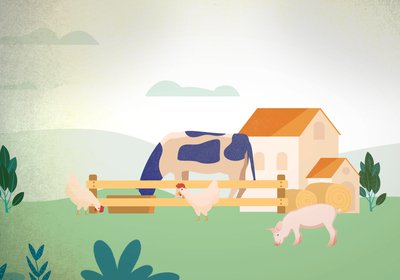Wealthy homeowners offered more ways to access trapped trillions
By Faith Glasgow
The past 20 years have been a great time to be a homeowner in many countries, as huge gains in house prices have turned struggling mortgage-payers into bricks-and-mortar millionaires.
To put that into context, property consultant Knight Frank reports that, across England and Wales, the total value of housing stock rose 274 per cent between 2000 and October 2021 - from £2.15tn to more than £8tn.
Nor are increases of this magnitude confined to the UK. Over the 20 years to June 2021, US house prices increased by 254 per cent, while in Australia they almost tripled, according to Oxford Economics data.
And these rising property prices have seriously skewed the household wealth landscape. A recent report from the Resolution Foundation found that the total value of British household wealth has grown by around £3tn since 2000, largely on the back of gains in property values.
But the majority of that wealth windfall has landed in the laps of older people who already owned property when prices were booming in the late 1990s and early 2000s. On average, says the report, those over 60 have enjoyed around £80,000 of gains on their main home since 2000, compared with £34,000 for those in their early 40s.
Property consultancy Savills makes a similar point about the increasing concentration of housing wealth in older hands. It finds that homeowners aged 50 plus now own 73 per cent of all homeowner equity, up from 66 per cent in 2001.
“Particularly over the last decade, falling interest rates have let older households continue to upsize, while tighter mortgage regulation pushed the first rung of the housing ladder out of reach for many younger households unable to benefit from family help,” explains Lawrence Bowles, director of Savills residential research.
The upshot is that it’s primarily older homeowners who face key questions around whether, when and how to access the illiquid wealth in their homes.
Downsizing - selling the family home, moving to a smaller and more manageable property (possibly in a cheaper part of the country), and releasing cash in the process – is the most obvious option for empty-nesters. It’s also the solution favoured by the government’s housing minister Chris Pincher, who wants to encourage elderly people to move out of their “under-occupied” family homes, freeing them up for young families and stimulating the whole housing market.
But while downsizing may make financial, practical and macroeconomic sense, many people simply don’t want to move home. For people in that position, there are alternative ways to access property wealth - and a couple of obvious options specifically for older people.
Retirement interest-only mortgages are relatively new products, mainly from the smaller building societies, which suit older borrowers able to demonstrate the wherewithal to cover regular interest payments. The maximum loan is typically 55-60 per cent of the property value.
As David Hollingworth, associate director of L&C Mortgages, explains: “They have no specified mortgage term, so the mortgage is only repayable when the property is sold.”
However, for people aiming to use housing wealth in retirement, a RIO mortgage may not work. “Having to meet a monthly interest payment may not be helpful for people aiming to release funds for retirement through the debt, as it puts a squeeze on income,” he notes. “That’s where it could be worth considering the more traditional equity release options.”
Equity release is available to those over 55. It generally takes the form of a lifetime mortgage – a loan against part of the value of your home. This can either be taken as a one-off lump sum, or you can specify a drawdown arrangement and take cash as and when you need it, thereby accruing interest only on the money you’re actually using. Rates range between 2.5 and 5 per cent, according to equityreleasesupermarket.com.
Unlike conventional and RIO mortgages, though, interest on the loan doesn’t have to be paid monthly, although most plans nowadays will allow you to do so, to reduce the final bill. Instead, the interest rolls up alongside the debt and is cleared when the property is eventually sold. But the compounding effect means interest can rapidly build up and erode the remaining equity in the property over time.
The final debt can never exceed the value of the property, so if you’re not worried about leaving an inheritance this is a useful (though expensive) way to access your property wealth, reduce an estate or provide a lump sum for a child.
An alternative form of equity release is a home reversion plan, where you sell a percentage of your home at a discount to the plan provider and receive a tax-free lump sum. You then continue to live in the property, rent-free, until you die or go into care, at which point it is sold and the profit split according to ownership. If house prices have gone up substantially, this arrangement favours the provider, as it buys its share at a discount and then enjoys full uplift.
For younger homeowners prepared to increase their mortgage payments to access a lump sum, conventional remortgaging – either increasing an existing mortgage or remortgaging a currently unencumbered property – is a further option.
“Many homeowners like the idea of using a standard repayment mortgage to do this, especially as mortgage rates are currently at low levels,” says Hollingworth. “Five-year fixed rates can be found below 1.5 per cent currently for those with plenty of equity in the property. However, much will depend on your individual circumstances.”
For example, if you are approaching retirement and the mortgage will run beyond your expected retirement age, the lender will want details of your expected post-retirement income.
“Age will also be a consideration, as many lenders have limits on the maximum age at the end of the mortgage term,” Hollingworth adds. This can range from 70-75 to 80-85. de[pending on the lender.
“Some will go even further,” Hollingworth says. “Family Building Society will consider up to age 95 in the right circumstances, while some lenders such as Marsden Building Society have products aimed at older borrowers that may offer a higher maximum age. Specialist lenders such as Hodge may not specify a maximum age at all.”
For owners not in a position to borrow at all, there are two more possibilities. If you have a spare bedroom, you could rent out, and the UK government’s Rent a Room scheme will allow annual earnings up to £7,500 to be taken tax-free. However, you have to be careful not to breach any mortgage or insurance terms. Also, you should take advice if renting to more than one lodger, as this could mean part of the property is treated as commercial space, and attract capital gains tax when sold.
Alternatively, it may be possible to let your entire family home and move into a smaller rented property, living off the excess rental income. But, again, be sure not to infringe the terms of your mortgage or insurance, and inform the providers. Note that the rent you collect may be subject to income tax whereas the rent you pay will come out of post-tax income, so the profit may be limited.













